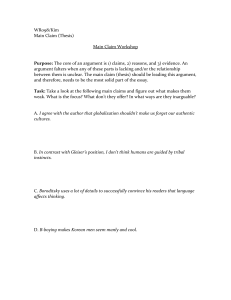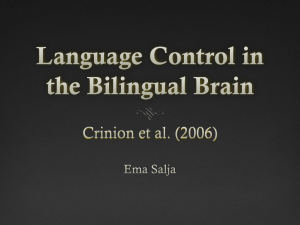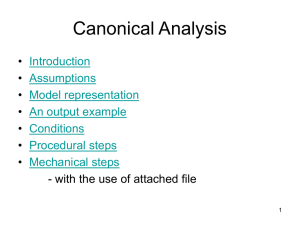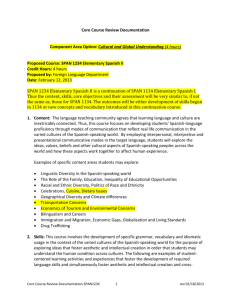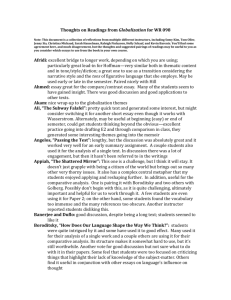Abstract
advertisement
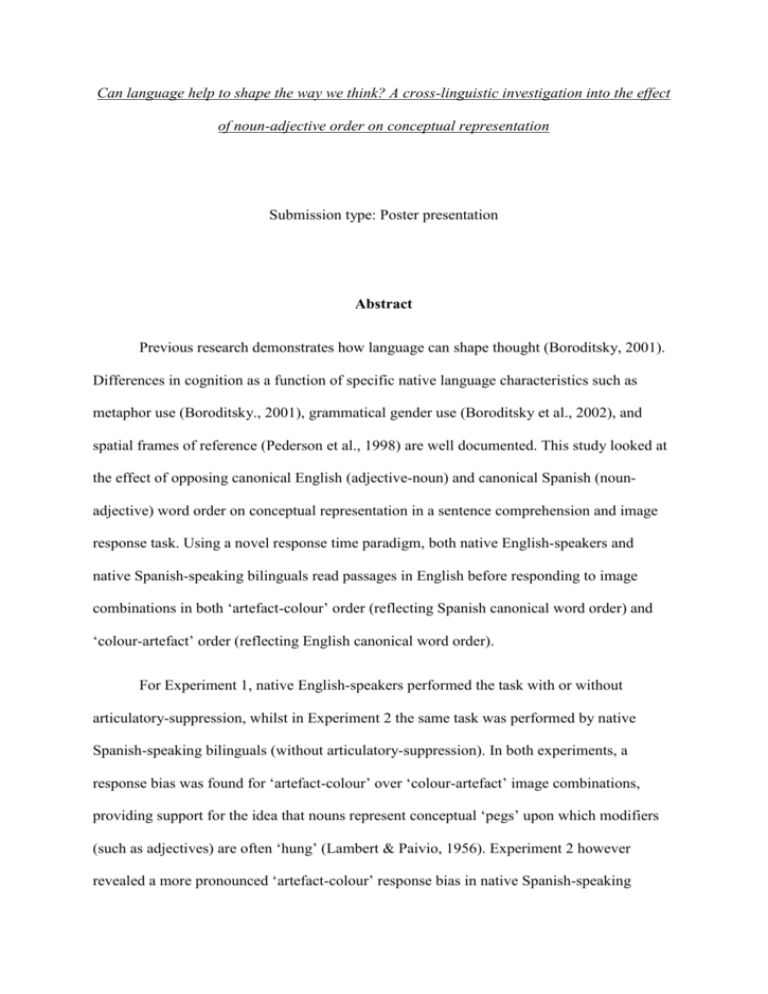
Can language help to shape the way we think? A cross-linguistic investigation into the effect of noun-adjective order on conceptual representation Submission type: Poster presentation Abstract Previous research demonstrates how language can shape thought (Boroditsky, 2001). Differences in cognition as a function of specific native language characteristics such as metaphor use (Boroditsky., 2001), grammatical gender use (Boroditsky et al., 2002), and spatial frames of reference (Pederson et al., 1998) are well documented. This study looked at the effect of opposing canonical English (adjective-noun) and canonical Spanish (nounadjective) word order on conceptual representation in a sentence comprehension and image response task. Using a novel response time paradigm, both native English-speakers and native Spanish-speaking bilinguals read passages in English before responding to image combinations in both ‘artefact-colour’ order (reflecting Spanish canonical word order) and ‘colour-artefact’ order (reflecting English canonical word order). For Experiment 1, native English-speakers performed the task with or without articulatory-suppression, whilst in Experiment 2 the same task was performed by native Spanish-speaking bilinguals (without articulatory-suppression). In both experiments, a response bias was found for ‘artefact-colour’ over ‘colour-artefact’ image combinations, providing support for the idea that nouns represent conceptual ‘pegs’ upon which modifiers (such as adjectives) are often ‘hung’ (Lambert & Paivio, 1956). Experiment 2 however revealed a more pronounced ‘artefact-colour’ response bias in native Spanish-speaking bilinguals (who habitually use noun-adjective word order) compared to native Englishspeakers, providing support for the idea that language can help to shape the way we think. References Boroditsky, L. (2001). Does language shape thought?: Mandarin and English speakers’ conceptions of time. Cognitive Psychology, 43, 1-22. Boroditsky, L., Schmidt, L., & Phillips, W. (2003). Sex, Syntax, and Semantics. In Gentner & Goldin-Meadow (Eds.), Language in Mind: Advances in the Study of Language and Cognition. MIT Press: Cambridge, MA. Lambert, W. E., & Paivio, A. (1956). The influence of noun-adjective order on learning. Canadian Journal of Psychology, 10, 9-12. Pederson, E., Danziger, E., Wilkins, D., Levinson, S., Kita, S., & Senft, G. (1998). Semantic typology and spatial conceptualization. Language, 74, 557-589.
